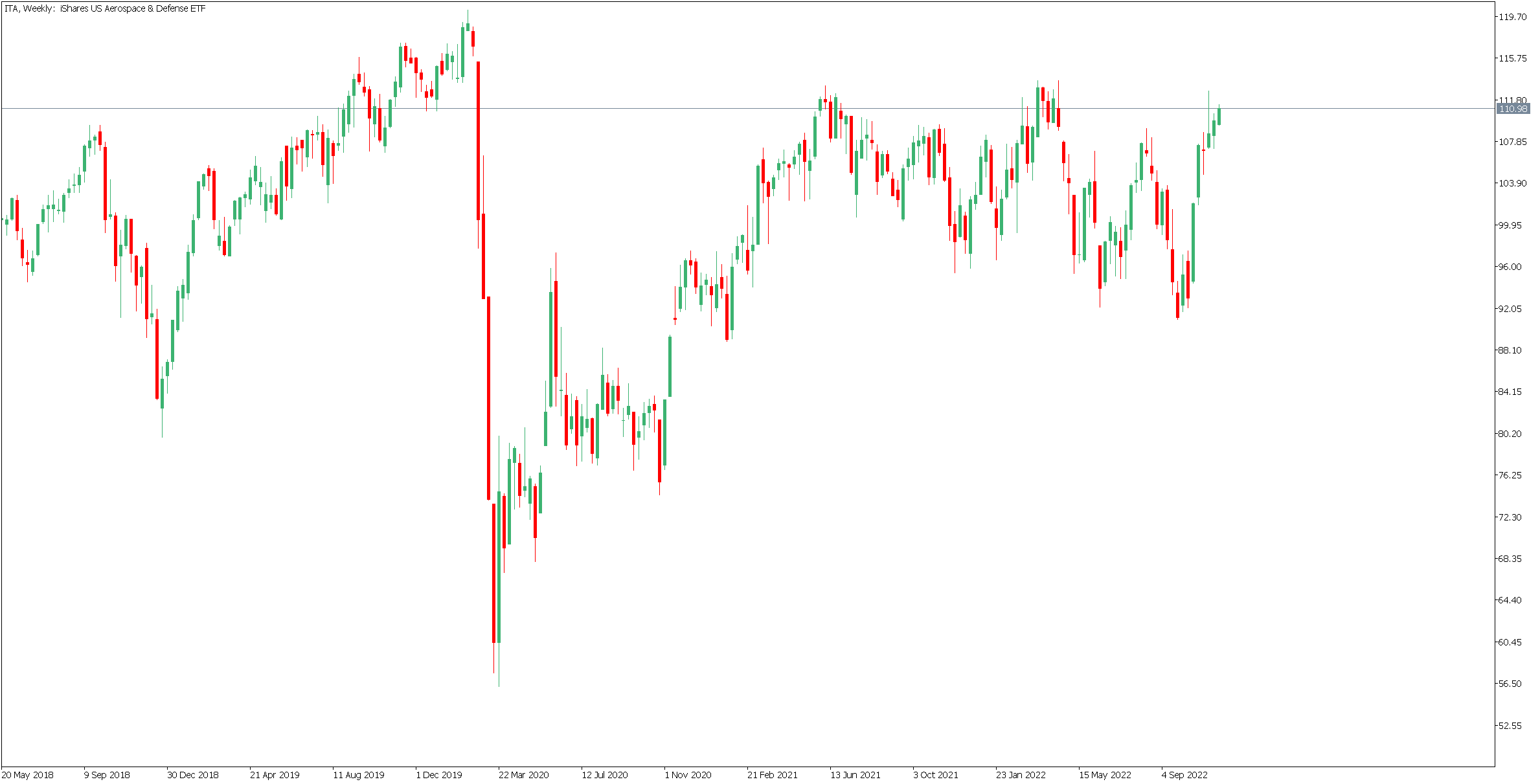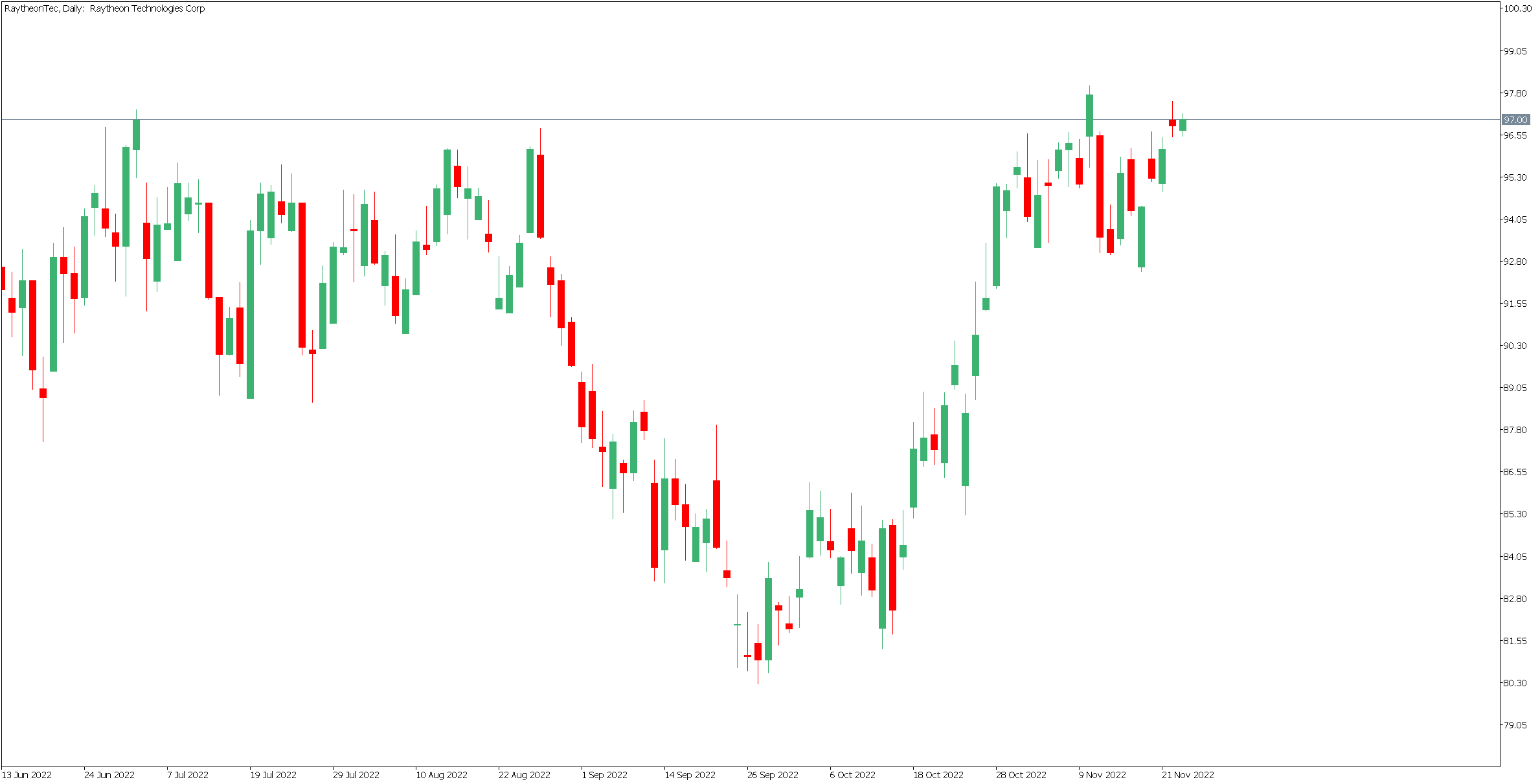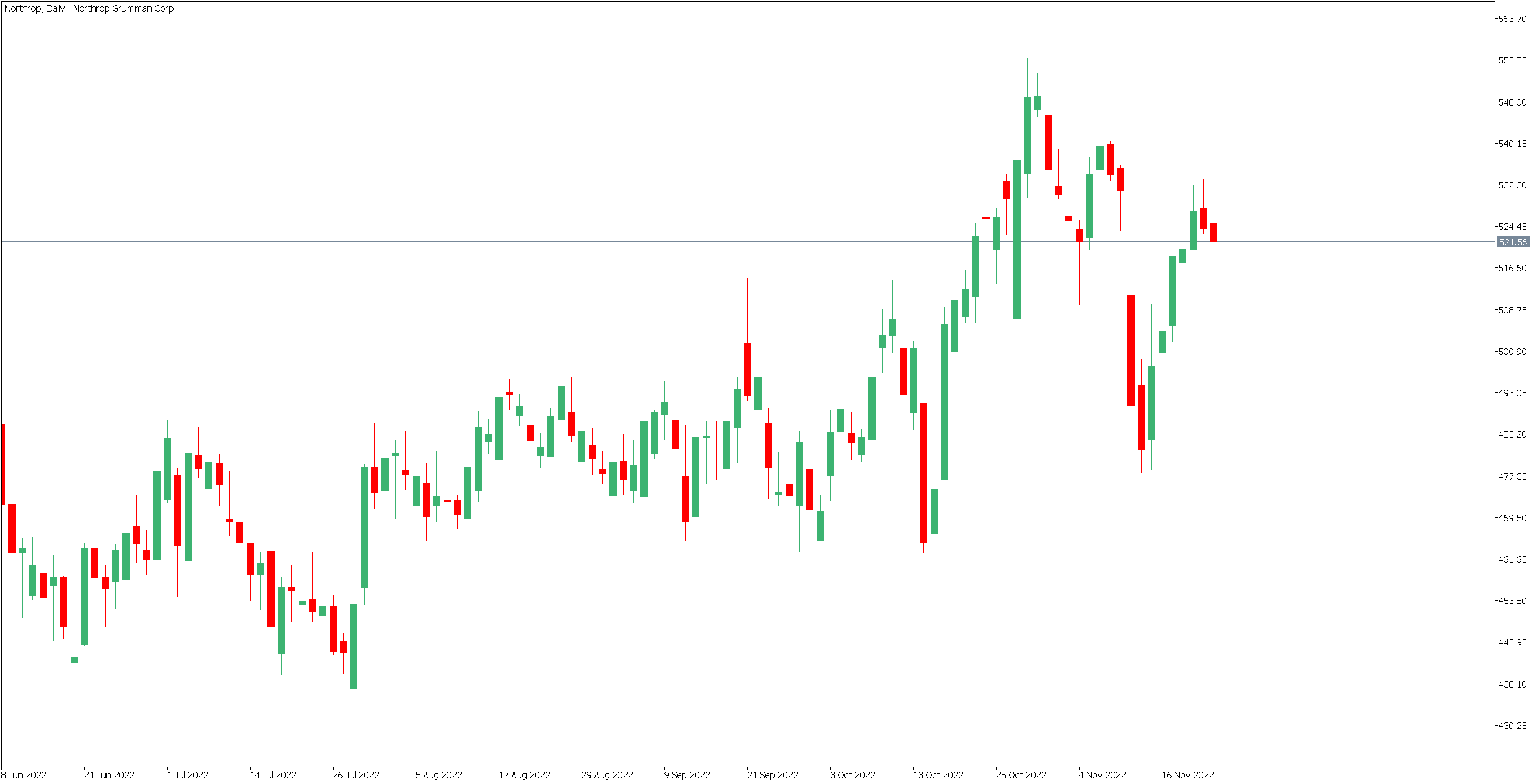"War, war never changes" - one popular science fiction universe began with this slogan. It seems particularly relevant now in the face of Russia's armed assault on Ukraine. Without delving into geopolitics, we decided to analyse the effectiveness of investments in armaments companies.
iShares U.S. Aerospace & Defence ETF
One way could be to invest in passive funds that give exposure to the sector, and an example of such a fund could be the iShares U.S. Aerospace & Defence ETF (ITA). The official website states that it gives exposure to US companies that manufacture commercial and military aircraft and other defence equipment.
The company with the largest stake in this fund is RAYTHEON TECHNOLOGIES CORP (RaytheonTec). In terms of revenue and market capitalisation, it is one of the world's major aerospace and defence manufacturers. It accounts for 21% of the total portfolio value. The average price-to-earnings P/E ratio for this fund is 22.9, which could be interpreted as the first sign of overvaluation. Does this mean that the market is now pricing in an extension of the conflict?

Source: Conotoxia MT5, ITA, Weekly
Aerospace & Defence companies
The previously mentioned RAYTHEON TECHNOLOGIES CORP (RaytheonTec) is one of the largest intelligence providers to the United States. It also manufactures aircraft engines, avionics, aerostructures, cyber security, guided missiles, air defence systems, satellites and drones. The company is also a large military contractor, receiving a significant portion of its revenue from the US government.
Revenue for the company does not appear to have increased significantly since the start of the conflict in eastern Europe. Growth has been 4.5% year-on-year and operating profits have increased by 10% year-on-year in the period. Analysts assume an increase in its earnings in the coming quarters, as the Forward P/E price-to-future earnings ratio is 18.52 (the current P/E is 32.38), which could mean it is potentially undervalued.

Source: Conotoxia MT5, RaytheonTec, Daily
Lockheed Martin Corporation (Lockheed) is the second company to operate in four business segments: aeronautics, missiles and fire control, rotary and mission systems, and space. Revenues are currently up 3.46% year-on-year, while operating profits are down 5.88% year-on-year. The Forward P/E price-to-future earnings ratio was 17.8 against a current value of 22.06. The company appears to have a similar situation to the one described earlier, but may have less potential for growth.
The last company we will look at is Northop Grumman Corporation (Northop), which is involved in aerospace and defence technology. Being, it seems, one of the most undervalued relative to its sector, currently achieving a P/E ratio of 14.91. When compared to the Forward P/E of 21.73, this company may offer one of the greatest growth potentials for the sector. The manufacturer's revenues (including drones) grew by 2.88% year-on-year, while operating profits in the period fell by 19% year-on-year.
 Source: Conotoxia MT5, Northrop, Daily
Source: Conotoxia MT5, Northrop, Daily
Grzegorz Dróżdż, Junior Market Analyst of Conotoxia Ltd. (Conotoxia investment service)
Materials, analysis and opinions contained, referenced or provided herein are intended solely for informational and educational purposes. Personal opinion of the author does not represent and should not be constructed as a statement or an investment advice made by Conotoxia Ltd. All indiscriminate reliance on illustrative or informational materials may lead to losses. Past performance is not a reliable indicator of future results.
CFDs are complex instruments and come with a high risk of losing money rapidly due to leverage. 75,21% of retail investor accounts lose money when trading CFDs with this provider. You should consider whether you understand how CFDs work and whether you can afford to take the high risk of losing your money.


